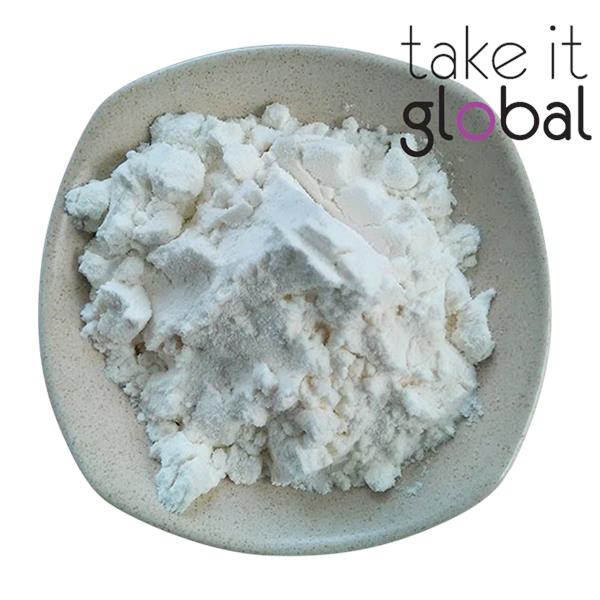Description
Food grade.
Other names: Gum Acacia.
TIC Pretested® Gum Arabic Spray Dry Powder is produced from the exudate from acacia trees.
Gum Arabic Spray Dry Powder is used in flavor and beverage concentrates, typically at the ratio of 1.5 parts of Gum for 1.0 part of Oil Phase (the oil phase is the oil + any weighting agent). Stable under wide range of pH.
TIC Gums offers a Pre-Hydrated® grade which is virtually dust-free for easy handling and lump-free for easy dispersion.
Cold Water Soluble.
Gum Arabic, also known as acacia gum, is a natural gum consisting of the hardened sap of various species of the acacia trees that thrive in Northern Africa. Gum Arabic is a complex mixture of glycoproteins and polysaccharides which gives it the properties of a glue and binder that is edible by humans.. It is the original source of the sugars arabinose and ribose.
Uses:
- In foods industries:
1.1 As an emulsifier, a thickener or a filler agent in icing, fillings, chewing gum, candies and other confectionery products.
1.2 As foam enhancer in carbonated beverages.
1.3 As a source of soluble fibre in many food preparations.
1.4 In Pharmaceutical drugs and cosmetics: the gum used as a binder, emulsifying agent, and a suspending or viscosity increasing agent.
1.5. In Wineries: it is used as a wine fining agent.
2. In Pharmaceutical Applications
2.1 In topical treatments to help wounds heal more effectively. This effect may be due to some of its chemicals, such as alkaloids, glycosides, and flavonoids.
2.2 Acacia gum has a naturally sticky texture. Materials with this property are often used to reduce irritation and inflammation, especially effective in easing stomach or throat discomfort.
2.3 Used in dental products like mouthwash to prevent gingivitis and plague.
2.4 Acacia gum contains water-soluble dietary fibre that brings many beneficial effects:
2.4.1 Maintains a healthy weight
2.4.2 Good for general cardiovascular health.
2.4.3 Keeps the cholesterol under control.
2.4.4 Maintains the colon healthy.
2.5 It can be used to help stop heavy bleeding in gashes, wounds, and other surface cuts. IN
3. Other uses:
3.1 Gum arabic is a key ingredient in traditional lithography to keep the non-image areas of the plate receptive to water. This treatment also helps to stop oxidation of aluminium printing plate
3.2 AS binder in glue, shoe polishes, “lickable” adhesives (e.g. stamps, envelops), paints, water colors,
3.3 For viscosity control in inks and in textile industries,
3.4 In ceramics, as additives ceramic glazes. It acts as a binder, helping the glaze adhere to the clay before it is fired, thereby minimising damage during the manufacturing process.
3.5 Photography uses Gum Arabic mixed with ammonium or potassium dichromate and pigment to create a coloured photographic emulsion that becomes relatively insoluble in water upon exposure to ultraviolet light. In the final print, the acacia gum permanently binds the pigments onto the paper.
How To Disperse Gums In Water
Gums begin to hydrate nearly as soon as they are added to water and sometimes hydration occurs before the gum is fully dispersed. This can result in the formation of gum balls or lumps that have dry gum powder on the inside where the water couldn't penetrate.
While all powdered gums have a tendency to form lumps when added to water, some gums are more troublesome than others. Among the most difficult are the more popular, Gum Arabic, Cellulose Gum, and Xanthan Gum. These gums are prone to lumping because their hygroscopic nature means they more readily attract and hold water molecules.
Timing is everything
When dissolving any gum in water keep in mind that the most important time for the gum is the first three minutes after addition or production. Giving the gum 5 to 10 minutes to hydrate makes a dramatic difference in the level of gum needed and in the functional properties it exhibits. This is because gums must reach 50% hydration before they are "self-sufficient." The addition of other ingredients like salts and acids before this point may slow or prevent full hydration.
Ways to prevent lumps from forming
- Disperse gum into a vortex -- If you are using a high shear mixer, slowly sift or sprinkle the gum into the vortex of liquid.
- Blend gum with other dry ingredients -- Add 1 part gum to at least 10 parts sugar or other dry ingredients in your existing formula. Mix well and sprinkle to rapidly mixing water. Beware that other ingredients such as salts, acids or too much sugar can interfere with the gums' ability to hydrate and reduce efficacy.
- Slurry the gum with oil -- Mix 1 part gum in 5 parts of your organic solvent (soybean oil, propylene glycol, etc.). This coats the gum particles and prevents them from lumping when added to your production tank. Keep in mind that you'll have to wait for your water-based ingredients to wash off the oil before the gum can hydrate.
Potential risks upon consumption
- Possible allergic reactions.
2. Drug interaction: It has been found to interact with the efficacy of some medications. For some antibiotics.
3. Anywhere from 15 to 30 grams of acacia per day is a safe dose, but talk to your doctor before giving it to younger children or older adult to avoid any potential digestive or absorption issues.
Principal:

Founded in 1909, a global leader in advanced texture and stabilization solutions, food and beverage companies rely on TIC Gums to improve the quality, consistency, and sensory experiences of their products. Customer service, high quality standards, and unrivaled knowledge have made TIC Gums the industry leader for more than 100 years.
You may also like
Recently viewed
Item received within a couple of days. Good packaging. Product is of good quality and they provide with certificate of analysis.

